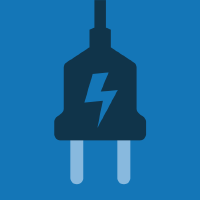Topic Menu
► Topic MenuTopic Editors


Power System Dynamics and Stability
Topic Information
Dear Colleagues,
With the increase in power electronic components and equipment, the power electronization of new power systems will lead to fundamental changes in their structural characteristics, operating characteristics and control mode, thus causing complex electromagnetic transient processes and dynamic stability problems. These will challenge the safe and stable operation of power systems. In order to ensure the safe and stable operation of power electronic power systems, the goal of this Topic is to reveal the operation mechanism of the power electronic power system, establish the numerical simulation model of the power electronic power system, analyze and study the theory of instantaneous electrical parameters and electromagnetic transient stability theory, explore new control methods and new power equipment and realize more accurate analysis models, reasonable and stable analysis ideas, control technologies and intelligent management and control strategies for power electronic power systems.
The objective of this Topic is to encourage the dissemination of new concepts, ideas and novel methods for analyzing the modeling and dynamic stability of power electronic power systems. It aims to disseminate fundamental research, innovation and information exchange in these related fields. Application papers are also highly welcome. Topics of interest include, but are not limited to:
- Security and stability analysis of power electronic power systems;
- Research on the mechanism model of power electronic power systems;
- Research on electromagnetic transient simulation model of power electronic power systems;
- Analysis of the power electronic power system simulation method;
- Power electronic power system oscillation analysis and suppression measures;
- Power electronic power system oscillation control method;
- Power electronic power system stability and control based on cloud computing and artificial intelligence;
- Parameter optimization method for power electronic power system control;
- Research on grid connection control strategy and method;
- Mechanism analysis method of power electronic power system;
- Power electronic oscillation suppression device;
- Research on operation mode of power electronic power systems.
Prof. Dr. Da Xie
Prof. Dr. Yanchi Zhang
Prof. Dr. Dongdong Li
Dr. Chenghong Gu
Dr. Ignacio Hernando-Gil
Dr. Nan Zhao
Topic Editors
Keywords
- power electronics
- power system
- modeling
- dynamic stability analysis
- mechanism analysis
- simulation method
- control strategy
Participating Journals
| Journal Name | Impact Factor | CiteScore | Launched Year | First Decision (median) | APC | |
|---|---|---|---|---|---|---|

Electricity
|
- | - | 2020 | 20.3 Days | CHF 1000 | Submit |

Electronics
|
2.9 | 4.7 | 2012 | 15.6 Days | CHF 2400 | Submit |

Energies
|
3.2 | 5.5 | 2008 | 16.1 Days | CHF 2600 | Submit |

Mathematics
|
2.4 | 3.5 | 2013 | 16.9 Days | CHF 2600 | Submit |

Processes
|
3.5 | 4.7 | 2013 | 13.7 Days | CHF 2400 | Submit |

MDPI Topics is cooperating with Preprints.org and has built a direct connection between MDPI journals and Preprints.org. Authors are encouraged to enjoy the benefits by posting a preprint at Preprints.org prior to publication:
- Immediately share your ideas ahead of publication and establish your research priority;
- Protect your idea from being stolen with this time-stamped preprint article;
- Enhance the exposure and impact of your research;
- Receive feedback from your peers in advance;
- Have it indexed in Web of Science (Preprint Citation Index), Google Scholar, Crossref, SHARE, PrePubMed, Scilit and Europe PMC.


